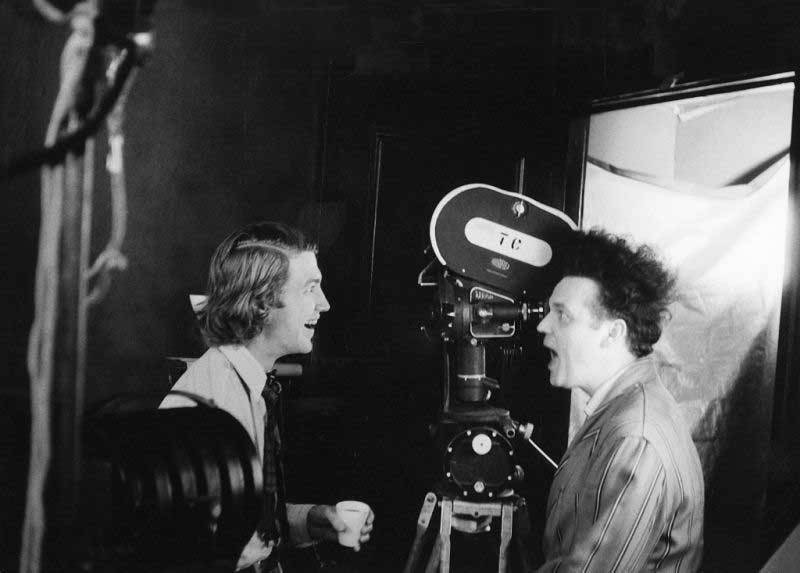There’s a scene in the Twin Peaks pilot that encapsulates the essence of everyday life in a high school. A girl sneaks a cigarette, a boy is summoned to the principal’s office, and a teacher takes attendance. The scene shifts abruptly when a police officer enters the classroom and whispers to the teacher. A scream pierces the air, and through the window, a student is seen sprinting across the courtyard. The teacher struggles to hold back tears, signaling an impending announcement. David Lynch then focuses his camera on an empty seat in the classroom, as two students exchange a knowing glance, realizing that their friend Laura Palmer is dead.
Lynch was renowned for capturing the mundane details of life, yet he always delved deeper, uncovering the unsettling undercurrents that lurked beneath the surface. This Twin Peaks moment is quintessentially David Lynch, subtly weaving the thematic thread that runs through his career. However, it's also not the definitive Lynch scene, as his vast body of work over 40 years offers numerous moments that fans might consider emblematic. Ask any Lynch enthusiast, and you'll likely receive a variety of answers, each highlighting a different aspect of his unique style.
When you can't quite pinpoint what's wrong, it's often described as 'Lynchian'—that unsettling, dream-like quality that cemented David Lynch's legendary status. This is what makes his passing so difficult for fans to accept. Lynch had a singular voice, yet his appeal resonated differently with everyone.
Few artists can claim to have inspired a new adjective. While terms like "Spielbergian" or "Scorsese-ish" refer to specific elements like lighting or subject matter, "Kafkaesque" captures a broader sense of unease and disorientation. "Lynchian" belongs to this elite group, encapsulating a feeling rather than a specific technique.
Watching Lynch's midnight movie classic Eraserhead was a rite of passage for budding film enthusiasts. Decades later, one of us watched it with his teenage son, who, along with his girlfriend, independently started binging Twin Peaks, reaching the Windom Earle era of Season 2.
Lynch's work has a timeless quality, often described as odd. This is evident in Twin Peaks: The Return (2017), where a child's bedroom is styled like a 1956 cowboy-themed room, a nod to Lynch's own childhood. Yet, this child inhabits a bizarre world, complete with a father who is a clone from another dimension and an evil counterpart who violently punches through a man's face.
The Return came during Hollywood's nostalgia boom, but Lynch used the opportunity to defy expectations, leaving audiences bewildered by not bringing back key characters from the original series. This was quintessentially Lynchian.
When Lynch adhered to Hollywood's conventional rules, the result was Dune, a notorious misfire yet unmistakably a David Lynch film. His struggles during its production are detailed in Max Evry's book, A Masterpiece in Disarray. Despite the film's fidelity to the source material, it's infused with Lynch's signature bizarre imagery, like the infamous cat/rat milking machine.
Lynch's imagery, though weird, funny, disturbing, or anachronistic, also possesses a unique beauty. His second feature, The Elephant Man, came close to Oscar bait but remains a touching and lovely film set in a disquieting historical context, where sideshow freaks were mistreated. This, too, is Lynchian.
Attempting to categorize Lynch's work into genres or tropes is futile, yet his films are instantly recognizable. His work is dark, funny, dreamlike, surreal, and genuinely strange in an organic way. One of the most compelling aspects of his films is his obsession with the world beneath our own, often pulling back the curtain to reveal what lies behind.
Consider Blue Velvet, which on the surface is a standard noir about an everyman turned amateur detective. Set in a Norman Rockwell-esque town, the film quickly descends into a world of gas-huffing drug dealers and surreal lounge singers, revealing the dark underbelly of mid-century Americana. Lynch's work is steeped in surrealism and unconcerned with being grounded. A documentary exploring his relationship with The Wizard of Oz further illustrates the unique influences that shaped his films.
In the current cinematic landscape, we're seeing filmmakers inspired by previous generations. Lynch, initially influenced by others, eventually became an influence himself, giving rise to the term "Lynchian." This term's broad applicability is evident in films like I Saw The TV Glow (2024), which features a Lynchian bar scene inspired by Twin Peaks.
Filmmakers like Yorgos Lanthimos, Robert Eggers, Ari Aster, David Robert Mitchell, Emerald Fennell, Richard Kelly, Rose Glass, Quentin Tarantino, and Denis Villeneuve have all drawn from Lynch's well of surrealism and otherworldliness. Their works, from The Lobster to Enemy, reflect the Lynchian influence.

David Lynch may not be everyone's favorite filmmaker, and not all may have seen his films, but his impact marks the end of an era. Like his films that explore the world just beyond our usual frame of view, his influence on future filmmakers is his lasting legacy. We will always be looking just under the surface, hoping to find those "Lynchian" things lurking.








